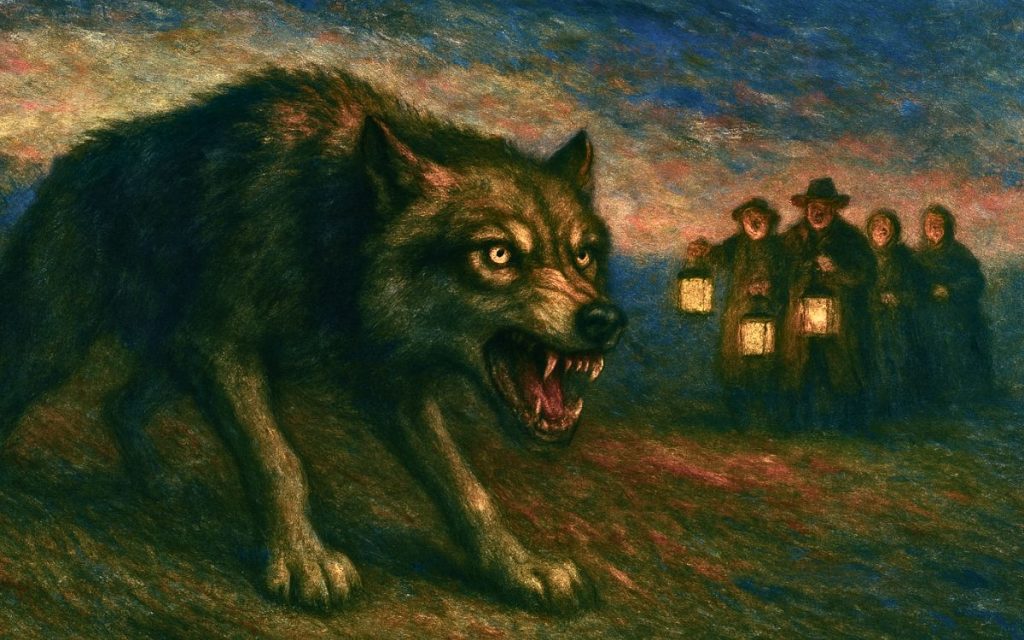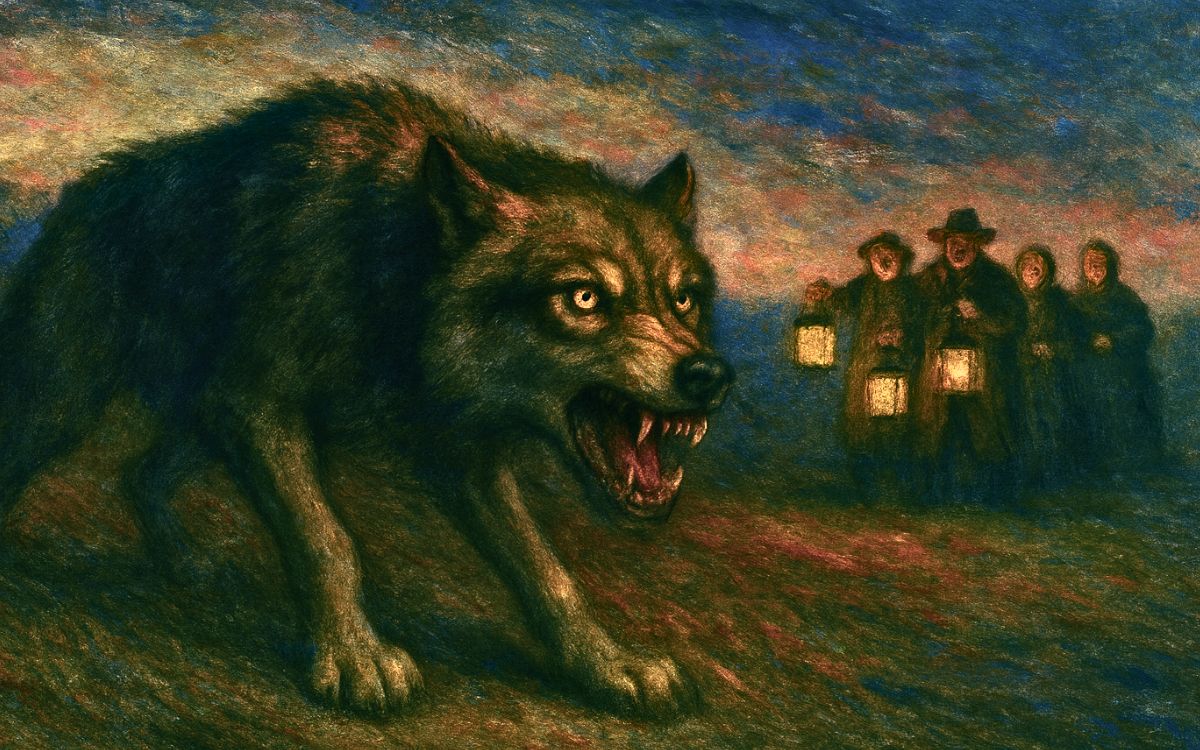A killer wolf once stalked the quiet Northumberland village of Allendale, and its fiery legend still burns today, writes GAYLE FIDLER
Allendale is a rural, picturesque village near the market town of Hexham in Northumberland.
The area has a long mining history, which began to decline by the end of the 19th century. It is now a popular tourist destination, with Hexham often described as a gateway to Hadrian’s Wall.
There are many opportunities for walking and exploring the landscape. Allendale has a rich cultural heritage and is well known for its annual tradition of the Tar Bar’l.
On New Year’s Eve, just before midnight, local men parade around the village carrying burning barrels of tar on their heads, before throwing them onto a huge bonfire in the centre of the village.
Allendale is surrounded by vast areas of moorland. The scenery is spectacular, littered with the remnants of a bygone era.
Ruined mine workings and derelict homesteads scatter the landscape.
A visitor to the village during the annual folk festival will be in for an unusual sight: the burning of the Allendale wolf.
Every year, people flock to the marketplace to watch the burning of a huge wooden wolf effigy at the Allen Valleys Folk Festival.
The Wolf of Allendale frightened villagers
The reason behind this is not just local legend. During the winter of 1904, the people of Allendale were living in fear.
Reports began to circulate that a ferocious wolf was roaming the landscape, killing livestock around the village and surrounding area.
Wolves have long since been extinct in the wild in England. Whilst the actual date of extinction is not known, legend claims that the last wolf was killed at Humphrey Head in Cumbria in the 14th century, although this has never been proven.
Allendale farmers were forced to post guards and house their sheep at night. People were terrified.
The wolf was allegedly seen by many eyewitnesses and up to 40 sheep were mutilated and killed.
On one occasion, it was claimed that the wolf had been spotted behind a local school. Howls were heard at night and lanterns left lit for safety.
Newspapers ran reports and interviewed many witnesses, including gamekeepers and landowners. Some gave differing descriptions as to the colour of the wolf.
This gave rise to speculation that there might be a whole wolf pack prowling the land.
A group was established to track the creature. They called themselves the Hexham Wolf Committee.
A reward for the wolf’s skin was offered by a local MP. Big game hunters were brought in, and even a famous prized bloodhound called Monarch was enlisted to hunt the wolf.
However, the sheep mutilations continued, and the dog was unable to pick up a scent.
The group did claim to find evidence of a wolf’s den, but no actual wolf.
People started to turn the hunting parties into a spectacle. Some attended in fancy dress and sang songs as they hunted the wolf, but it was never found.
Rumour began to circulate that the wolf belonged to a private collection of animals, owned by a Captain Bain from Shotley Bridge in County Durham.
A captive grey wolf from the zoo had escaped a few months prior to the sightings in Allendale. It was suspected that this escapee was behind the sheep killings.

Captain Bain, however, denied this, stating that his missing wolf was small, young and harmless. Not big enough to attack and mutilate sheep in the way they had suffered.
The missing wolf did not match the description of the one that had been seen in Allendale.
Captain Bain later changed his story when interviewed for a local newspaper, stating that his missing wolf was much larger and more dangerous than first described.
However, he would not admit liability.
Not long after Christmas in 1904, it was reported that the body of a male grey wolf had been found near a railway line at Cumwinton, near Carlisle.
The poor creature had been hit by a train.
Captain Bain visited the body but said it was not his missing wolf, and there were no other reports of a missing wolf in the area.
The Hexham Wolf Committee believed Captain Bain, reporting that the Allendale wolf was still at large.
However, sightings of the beast went quiet after summer 1905.
The body of the wolf that was hit by the train was too badly mutilated to be preserved.
It was beheaded, and the head was sent to the Midland Railway’s headquarters at Derby.
The head was displayed in the window of a taxidermist’s shop before being mounted outside the Midland Railway’s boardroom.
The head of the wolf was last reported being seen in the mid-1930s, but its whereabouts since then have remained a mystery.
The story of the Allendale wolf was later covered by well-known American writer and researcher of anomalous phenomena, Charles Fort, in his 1931 book Lo!.
Whilst the mystery remains never fully solved, the memory of the wolf lives on through the village folk traditions.



